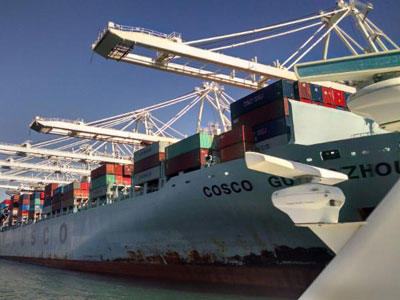

I recently met with the Inland Empire Economic Partnership’s logistics council to discuss the state of logistics, and it was a compelling and concerning conversation with the thought leaders in that space. Here are a few facts to ponder:
- According to the Pacific Merchant Shipping Association, despite record amounts of cargo moving through ports around the country, ports cannot catch up; however, it isn’t solely a port issue. It is a supply chain issue (boxes, ships, berths, trucks and so on). The port of L.A. set a “Western Hemisphere” record of movement of one million TEU’s for one month, and it isn’t enough.
- According to the Marine Exchange of Southern California, the typical number of container ships at anchor is 0-1, and we have 15 which is a vast improvement from 40 in February (a record). The typical level of container ships at berth in 2019 was 10-20, and now we have 28. Even more striking, the typical level of container ships in port was 10-20 in 2019, and now we have 43, down from a record of 67 in January. Suffice it to say, although improving, the ports are overwhelmed, and the ‘busy season’ is starting.
- According to Lloyd’s Loading List, the situation will not improve anytime soon. Even if demand subsides in the future (which doesn’t appear to be happening as consumers are spending more than ever), the freight boom will continue due to record low U.S. inventory-to-sales ratio levels.
- Warehouses are full and capacity constrained – one member talked about a client looking in Nevada solely due to lack of space even though it would increase cost by 30%.
- According to Freight Waves and Cass Information Systems, freight costs surged at the fastest rate on record in June.
- A client mentioned that they are being forced to bring product in through Tacoma since all the Southern CA ports are at capacity. The product has been available since late May, and the price is outrageous.
The situation is clear – logistics capacity constraints abound!
What Should We Consider and/or What Impacts Could Arise?
- Who are your partners? If you have vendors instead of partners, you will not be able to supply your customers. There isn’t much you can do if you treated your suppliers like vendors until now. They have plenty of choices and opportunities. Who do you expect them to prioritize?
- Are you a customer of choice? As is common sense, if you are a customer of choice, you are more likely to be prioritized. Do you make everything difficult? Let’s hope not or you will be left in the dust. The winners are being separated from the losers in this post pandemic period.
- Is your top talent working these supply chain issues? It isn’t the time to put the B team in. Get your top talent focused on generating creative ideas and delivering solutions. Don’t just assume they understand their value. Appreciate these herculean efforts and results.
- Try new ideas/ innovate Our most successful clients are trying all sorts of new things simultaneously to successfully navigate these turbulent waters. If you want to thrive post pandemic, you’ll find solutions and test ideas.
- SIOP – jump on proactively managing your demand and supply. Volatility is great, disruptions abound and the situation calls for constant realignment. If you don’t have time to put SIOP in place, you won’t have time to stay in business.
- Reevaluate your supply chain – on a parallel path with successfully navigating the situation, reevaluate your sourcing, your make vs. buy decisions, your customers and the end-to-end supply chain.
Read more about these types of topics in my eBooks such as Emerging Above & Beyond: 21 Insights for 2021 from Manufacturing, Supply Chain & Technology Experts. Gain ideas and strategies to proactively handle supply chain disruptions and scale successfully. If you are interested in gaining an expert assessment and path forward tailored to your company, please contact us.
Please share your stories, challenges, ideas and successes.


